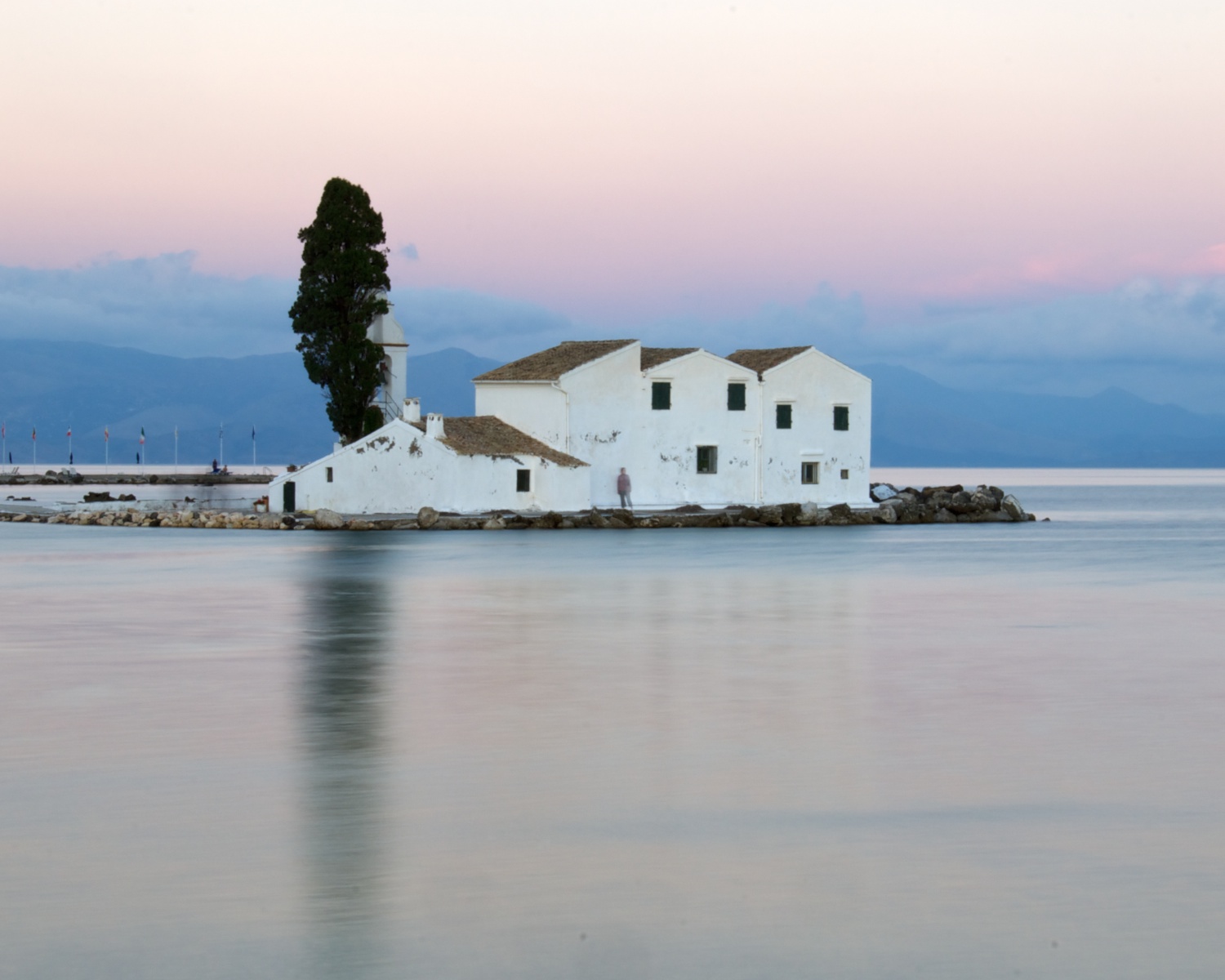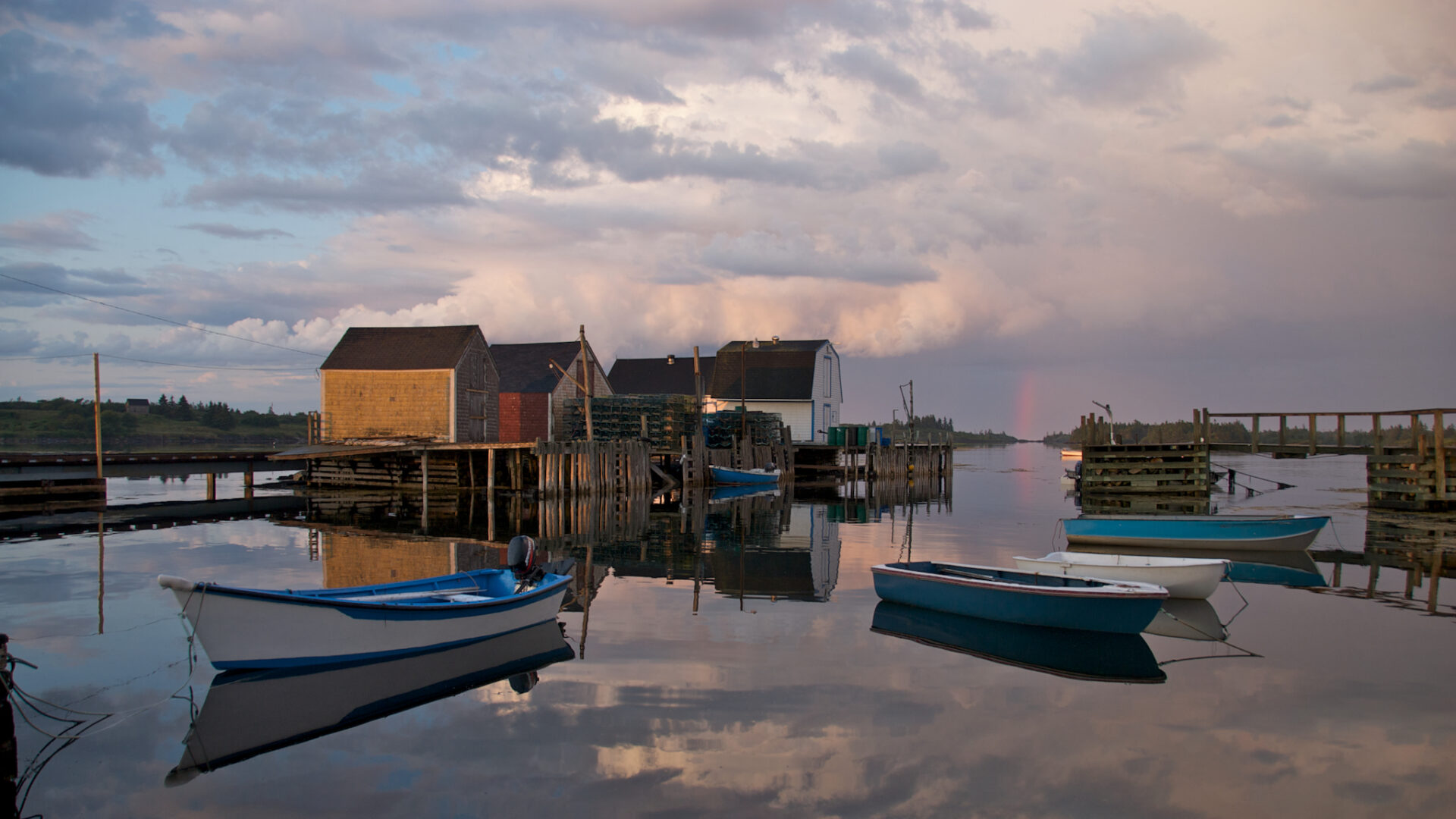I currently have a piece up at the Maryland Federation of Art Member’s show, and since it won an ‘Award of Merit’ (second place, I think…) I thought I’d step through some of post-processing I used to make it.
I described the capture of the shot on this post. To add a bit more detail, the photo at left (taken from the most picturesque Starbucks I’ve ever seen) shows the context. (As an aside, on the right, just off the edge of the photo, was a small cliff and is where I took the 737 landing, about 30 minutes later). I had wandered out on the causeway, about halfway down, with the setting sun to the right, hoping to get the monastery lit up at sunset. I did not have a tripod, so I sat the camera down on the concrete, and adjusted the view the best I could using my lens cap. One thing I didn’t count on was that my neutral density filter, which I had screwed on to increase the exposure time and smooth out the ocean, was covered in dust. Here is the original shot (click to see all those spots).

Yuck! Which brings me to step one in post-processing. I was unable to shoot level, so I first rotated. Then I edited out most of the dust. Big improvement!

I didn’t remove all the spots, because I knew I’d be cropping out some of the water and sky. Next some minor level enhancement to improve balance

And then the hardest step: cropping. My camera shoots in an aspect ratio of 2:3, but the ‘standard’ medium size print is 8 x 10 (2:2.5). You can see in my original blog post that I had cropped it down to 2:4 ratio, emphasizing the monastery and the walkway to the left, defocusing the eye away from all the sky and water. But it’s hard to find that print size, and I wasn’t about to submit an 8 x 10 ratio print, which looks like this:

That ratio throws off the composition. For some reason that I still have not figured out, 8 x 12 prints, which fit the images from my camera, are impossible to find. Frames are even harder! In the end I went with an almost panoramic aspect ratio, which does work quite nicely:

I typically don’t spend much time post-processing (and even this photo did not take too long), but I have always liked this photo, and that tedious work of removing dust spots, all 93 of them, was worth it.



